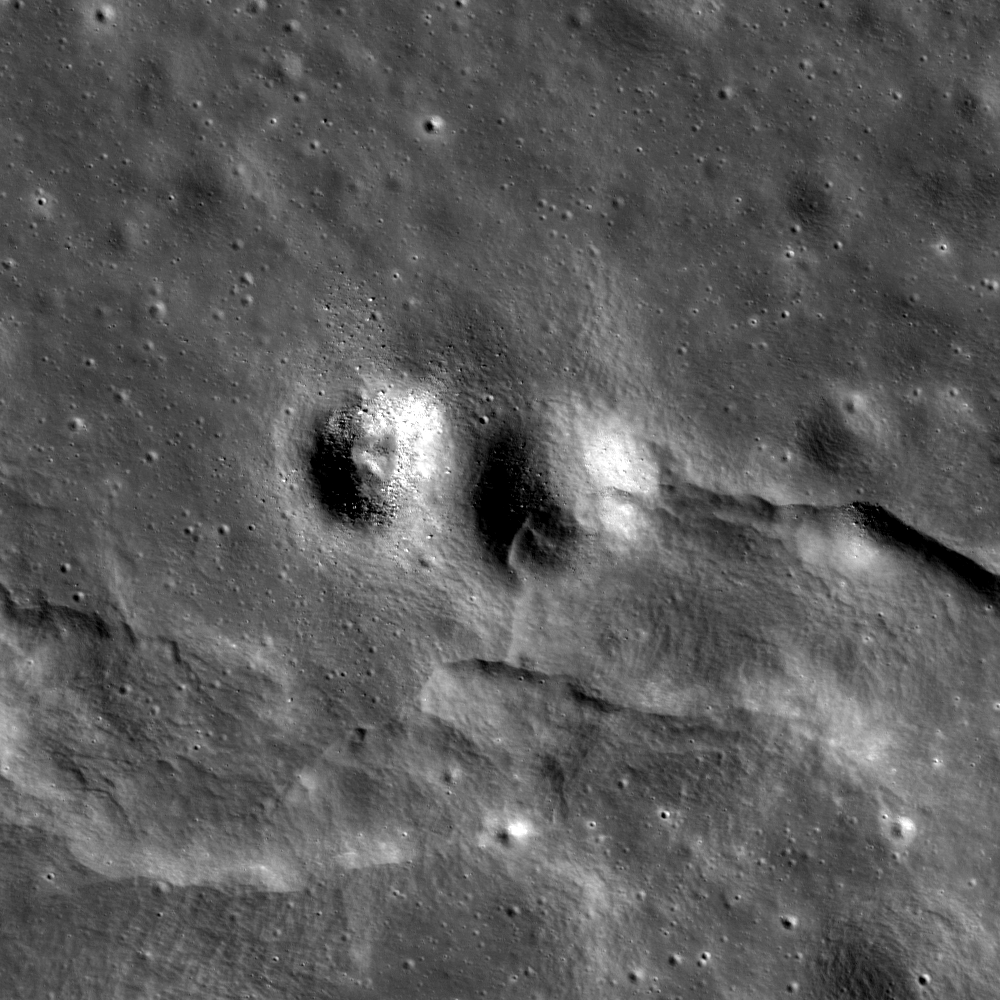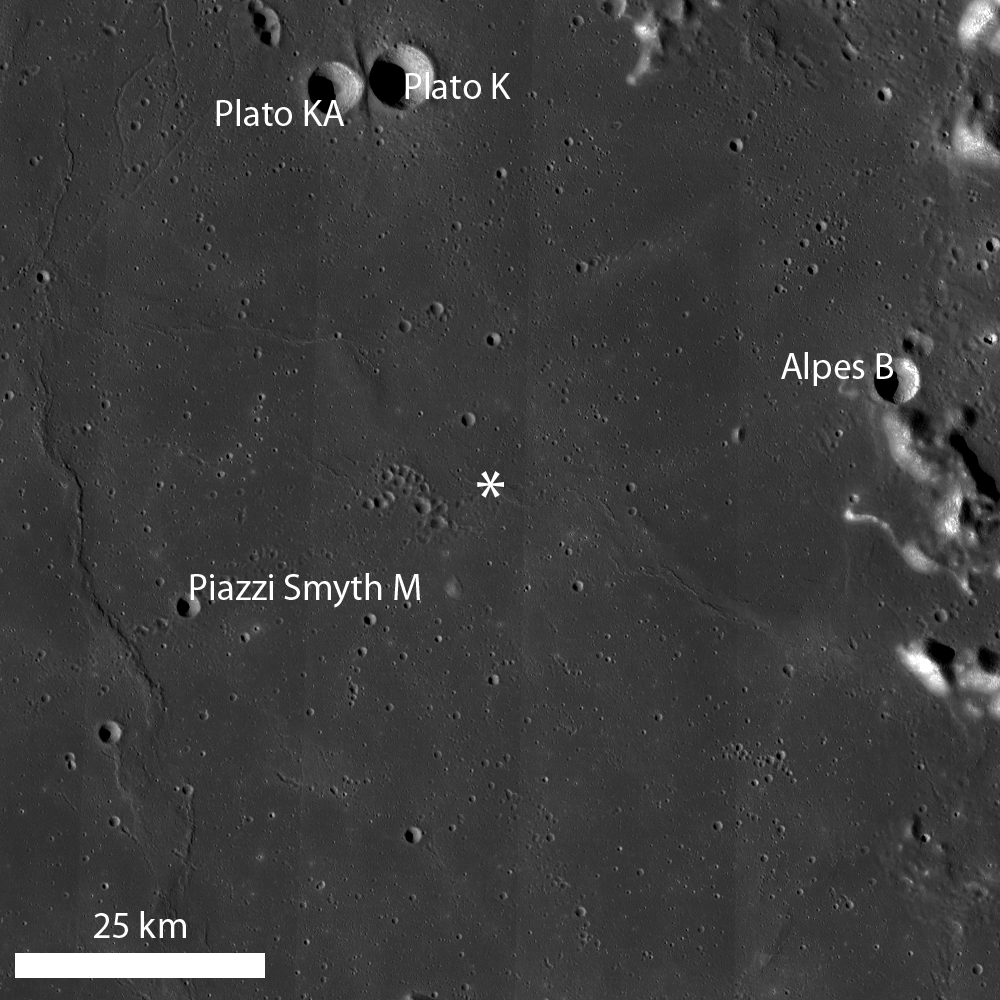
Relative age relationships are key to unraveling the geologic history of the Moon. Relative ages reveal the order of geologic events without knowledge of their absolute age. Usually relative ages are determined by the stratigraphic relationships of geologic features - what is on top and what is below. Stratigraphy is not simply the study of rock layers and layering, it provides geologists with the tool to determine age relations locally, and in some cases globally. Gene Shoemaker and Robert Hackman used some ingenious thinking to describe key stratigraphic markers throughout the Moon's geologic history. But you don't have to be a lunar geologist to understand the significance of stratigraphic relationships. The most obvious stratigraphic relationships on the Moon are the mare basalts embaying (or covering) the older highland terrain.
Sometimes it takes a bit of searching to find clear stratigraphic relationships at the high resolution of the LROC NAC images. Today's Featured Image provides an example of a clear age relation, where an impact crater is cross-cut and deformed by a wrinkle ridge. The deformation of this crater took place in the north-south direction, and distorts the crater from a circular shape to ellipse. Its diameter is ~330 m measured east to west, and in the north-south direction, the crater is only ~300 m wide.
These observations help us construct a plausible geologic story for this small area. First, the mare basalts erupted and cooled, then the impact crater formed. At some point after the impact event, the wrinkle ridge deformed the crater. However, much time has passed since the impact event, because the crater has no high-reflectance ejecta rays, its walls are smooth, and there are only a few boulders. Alternatively, very little to no time may have passed between crater formation and wrinkle ridge formation because the wrinkle ridge is smooth and also has only a few boulders. So, while parts of the relative age story can be clearly inferred, some details are tricky to fully unravel.
Furthermore, how does the bouldery crater adjacent to the deformed crater fit into this story? There are several options based on the appearance of both craters, but the easiest explanation is that these craters formed at slightly different geologic times because although their rims are rounded and smooth and the craters do not not have ejecta rays, they do have different concentrations of exposed boulders. But why does this adjacent crater have so many more boulders? Boulders are usually formed by impact into a coherent rock layer (e.g., the impact exposes and fractures bedrock). Since the mare regolith is probably only a few meters deep at most, these ~300 m diameter craters would have punched through the regolith layer to expose bedrock. If the two craters are the same age, they should have similar boulder concentrations, but if they are not the same age, we can devise a different geologic story. If we assume that the deformed crater is older than its neighbor, we would expect that the deformed crater would be more eroded. If the neighboring, bouldery crater is younger, then perhaps the boulders surrounding this crater have not had enough time to be worn away by continuous micrometeorite bombardment.
What do you think? Observe the full LROC NAC image and decide whether you can come up with a better geologic story!
Related posts: Fault scarp with impact melt in King crater
Published by Lillian Ostrach on 12 July 2011
